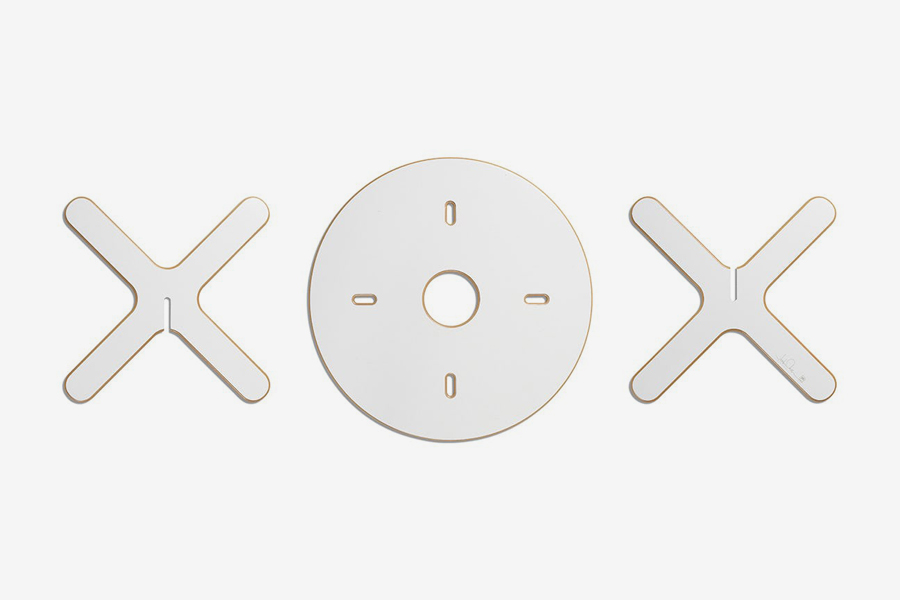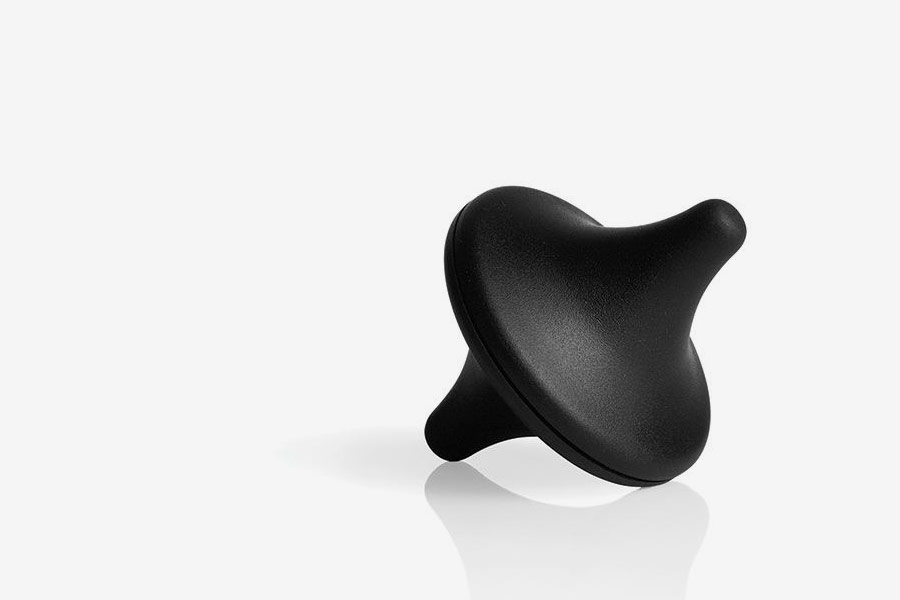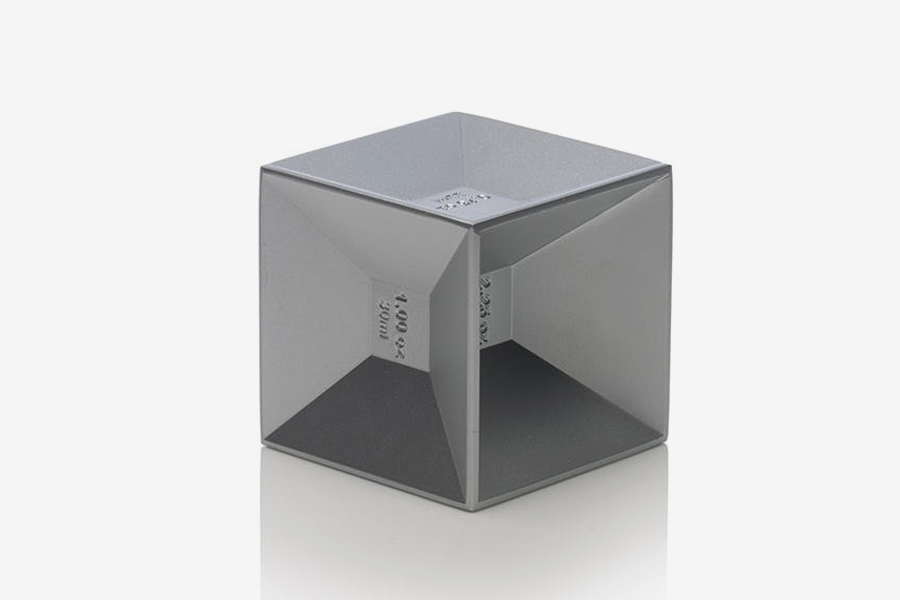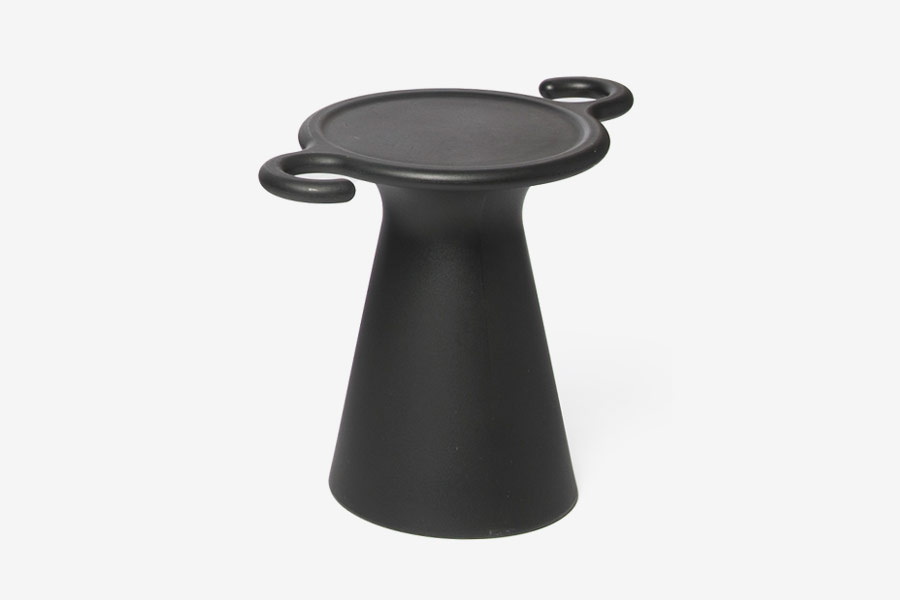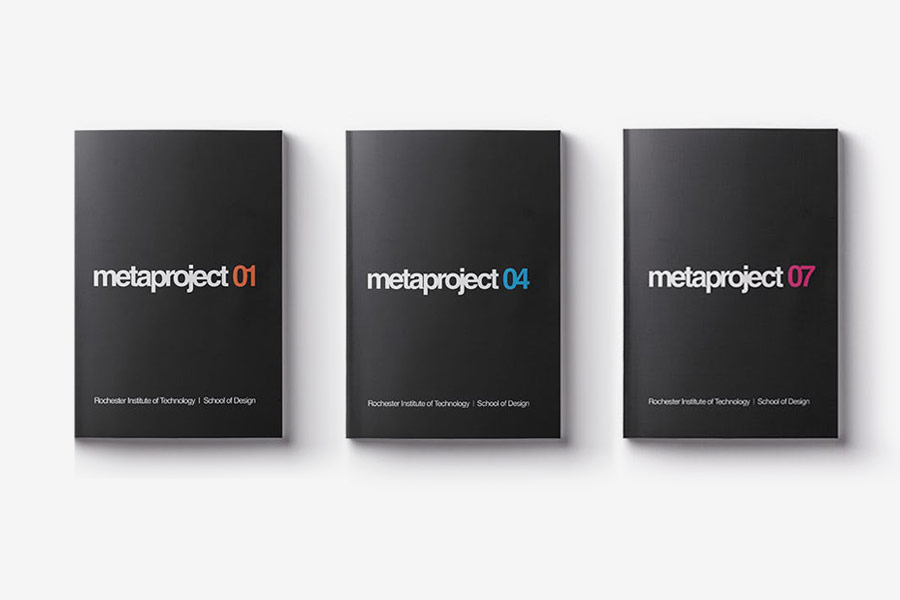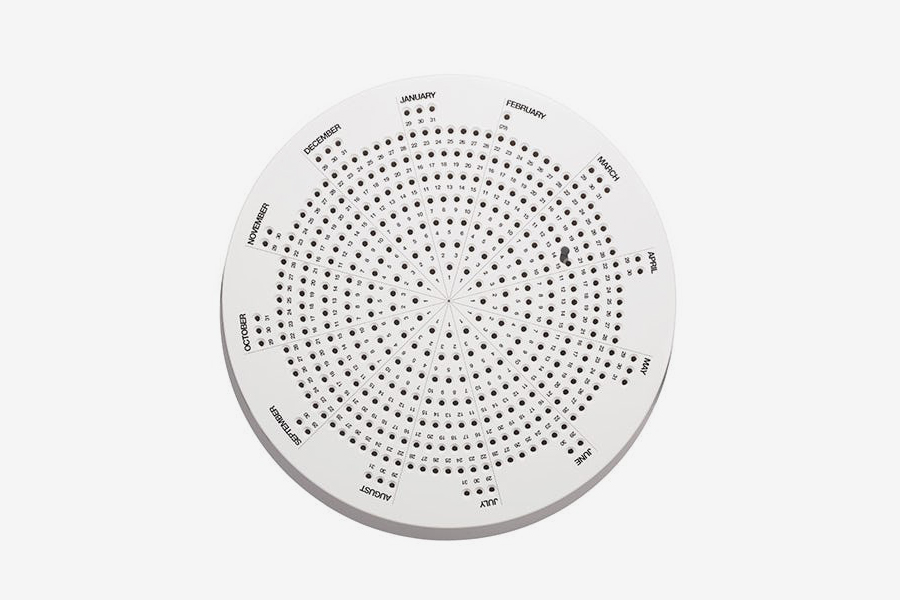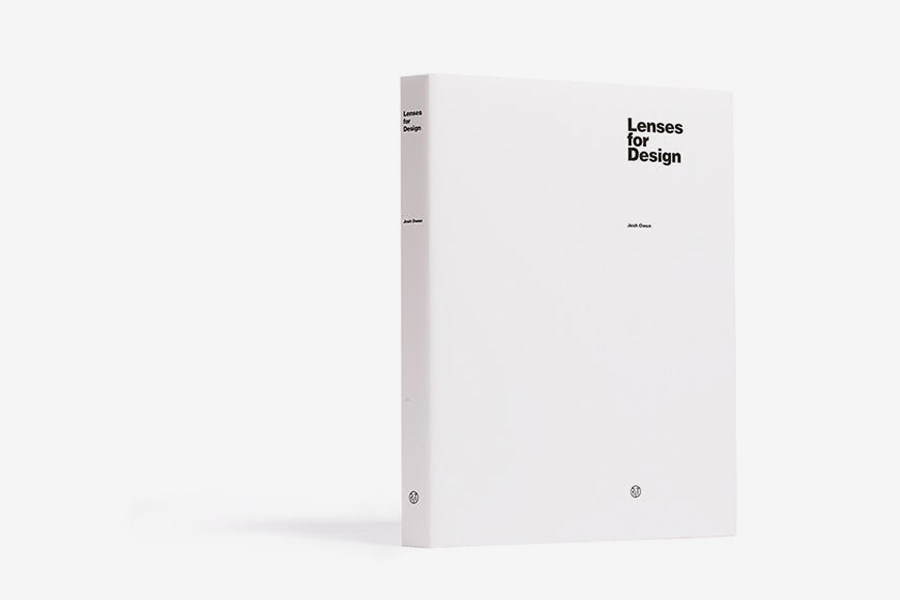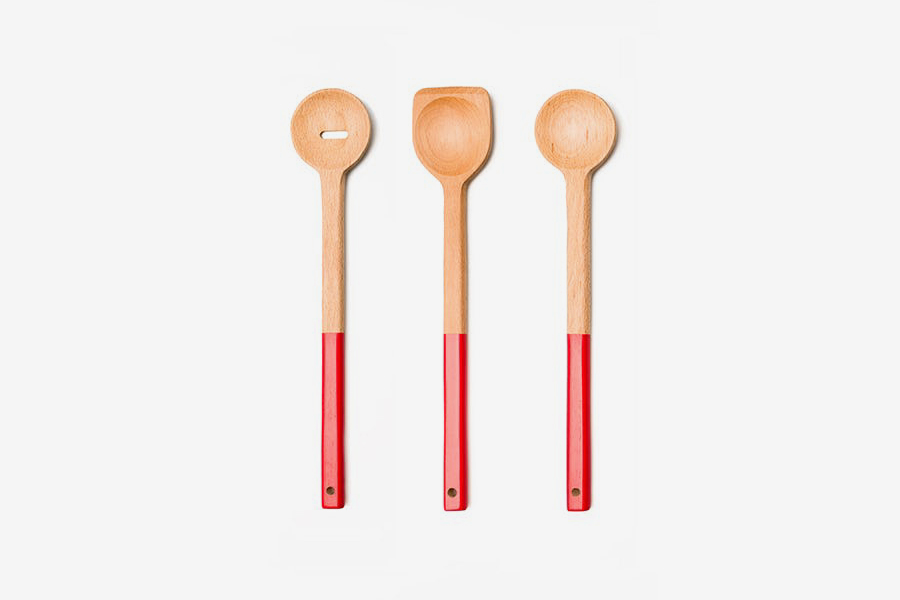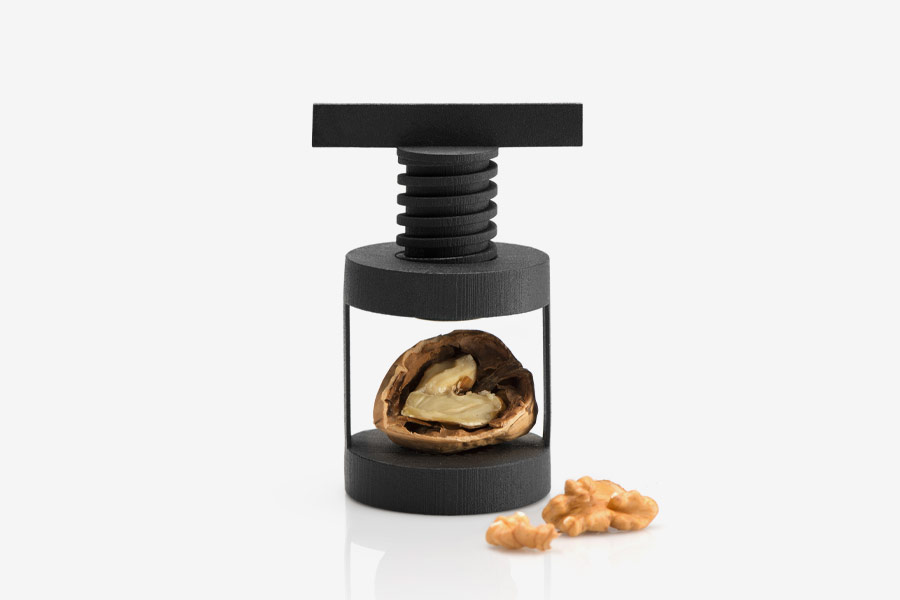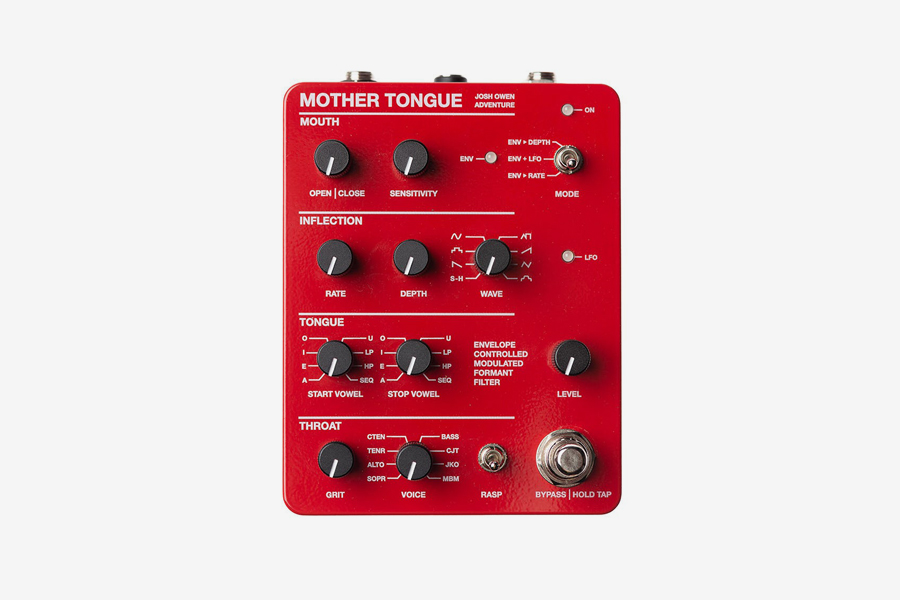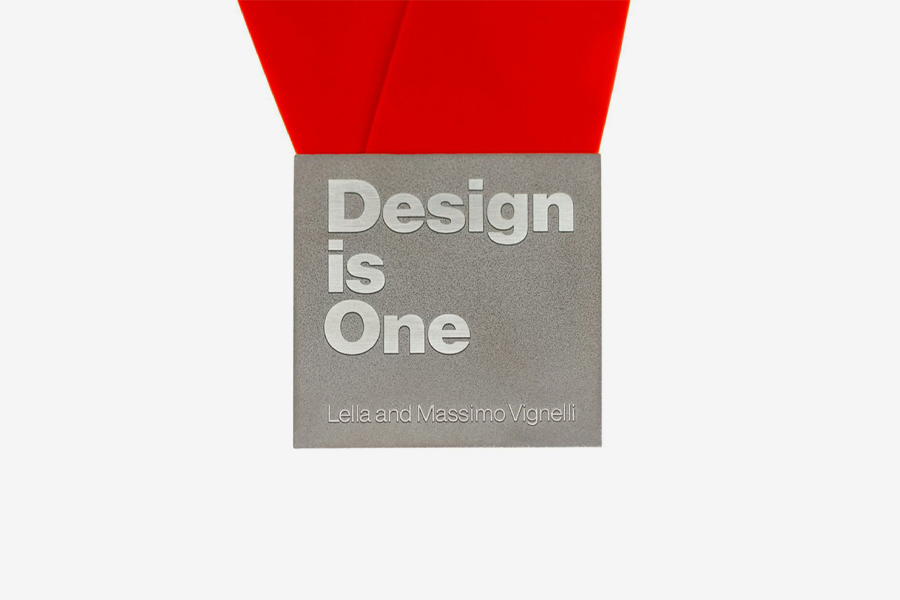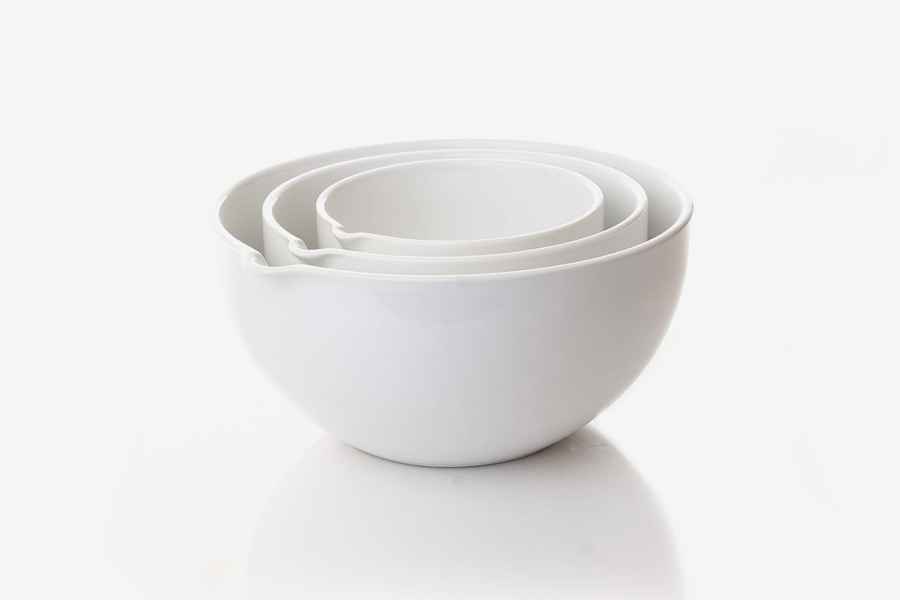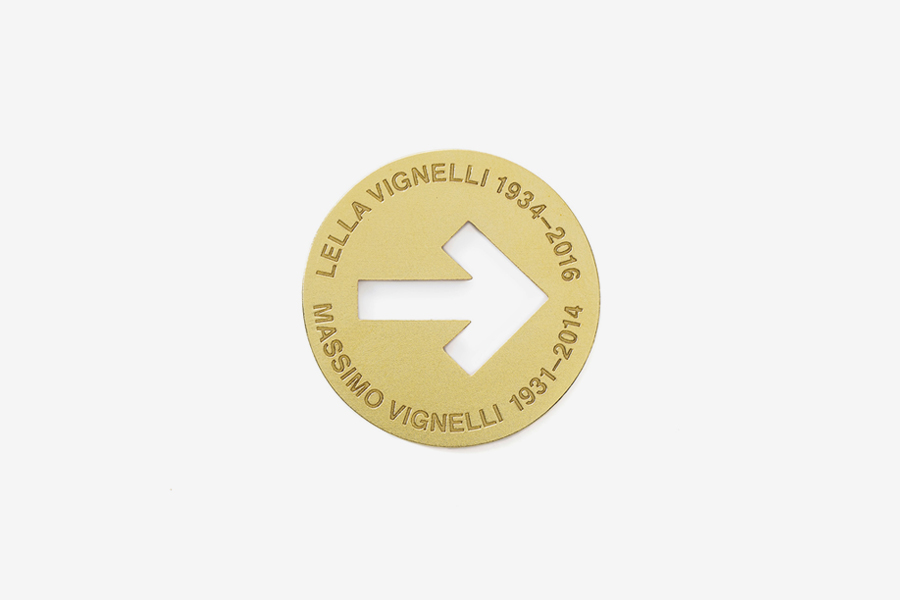Josh Owen
Philadelphia, USA, 1970
Who’s Who
Josh Owen is an internationally renowned industrial designer, educator, and author. He is the president of his eponymous design studio, Josh Owen LLC, and is the Vignelli Distinguished Professor of Design and Director of the Vignelli Center for Design Studies at The Rochester Institute of Technology (RIT).
He graduated from Cornell University in 1994 with a B.F.A. in sculpture and a B.A. in visual studies. In 1997 he received an M.F.A. in furniture design from the Rhode Island School of Design (RISD).
In 1997 he established his design practice—officially named Josh Owen LLC in 2005—focusing on developing products for both American and foreign companies including Areaware, Casamania, Heller, IBM, Kikkerland, Kontextur, Loll Designs, Nambé and Umbra. His work encompasses the design of objects, graphics and spaces, distinguishing itself for its clarity, consistency and inventiveness.
He began his teaching career at Philadelphia University in 1999, also teaching a product design course at the University of Pennsylvania School of Design. In 2010 he joined the Industrial Design program at The Rochester Institute of Technology, eventually becoming Distinguished Professor and Director of the Vignelli Center for Design Studies in 2020.
Within his activity at the RIT, Owen conceived and held the Metaproject programming since more than a decade—a successful initiative to pair students with industry partners in order to develop products and solutions consistent with the Design is One philosophy espoused by the Vignelli Center for Design Studies.
Owen has been the winner of eight Chicago Athenaeum Good Design Awards, the International Design Award, and has received honorable mentions for the ID Annual Design Review and the Red Dot Design Award. He is the author of the books “Big Ideas / Small Packages” and “Lenses for Design” and his work is included in the permanent collections of the Centre Georges Pompidou, the Denver Art Museum, the Philadelphia Museum of Art, the Chicago Athenaeum, the Montreal Museum of Fine Arts, the Design Museum Brussels, the Taiwan Design Museum and others.
Enjoy your reading,
 © James Bogue for the source photo used to prepare the portrait cover.
© James Bogue for the source photo used to prepare the portrait cover.
TO THE TOP ↑
Q&A
Published Sep 16, 2024
Recorded June 11-July 6, 2024
What job did you want to do in the future when you were a child?
When I was a young boy, I accompanied my father and participated in his archaeological excavations. I was very interested in archeology and at the same time I was always drawing, making things and playing music. I think if you asked 10-year old Josh Owen what he wanted to do when he grew up, he would have said: “I want to be an artist and an archaeologist.”
What was your educational path?
I entered university with interests in both culture and cultural production. These curiosities led me to visual studies within anthropology and a concurrent exploration of the fine arts. I spent a year at Tel Aviv University in Israel for my first year of university, then entered Cornell University where I earned a BA in Anthropology and a BFA in Fine Arts. During my third year, I received a scholarship to study in Rome. This was an important experience as it informed my interest in design which began more seriously at that time. After completing my undergraduate degrees, I spent a year as a guest artist at Cornell while playing music professionally with a band. After that year, I entered the Rhode Island School of Design where I earned an MFA in Furniture Design.
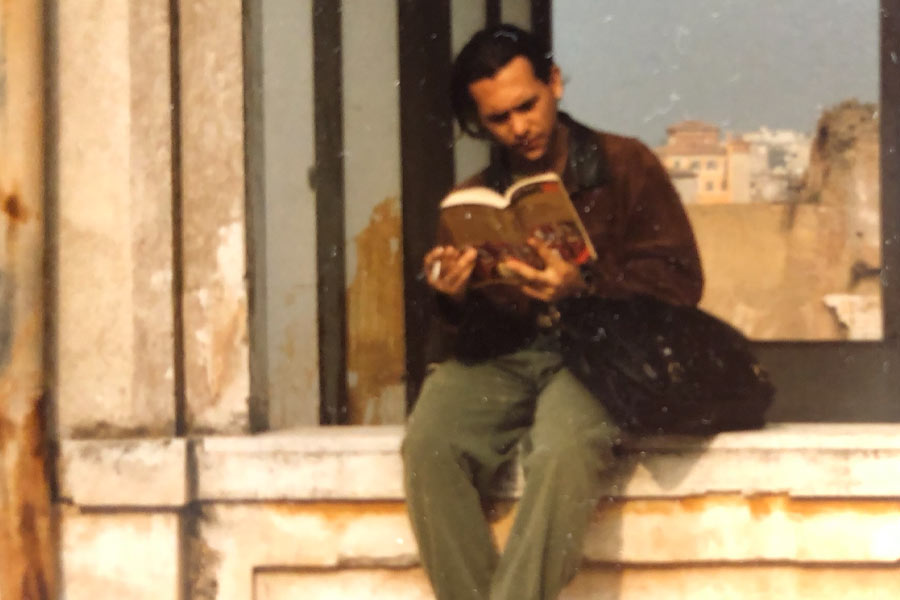 Josh Owen in Rome in 1992, reading Vignelli-designed Fodors Guide, as a student on scholarship.
When and how did your passion for design originate?
Josh Owen in Rome in 1992, reading Vignelli-designed Fodors Guide, as a student on scholarship.
When and how did your passion for design originate?
Looking backwards it seems clear that I have always been a designer. As far back as I can remember, I have always been curious about our environment and the elements that we humans craft to adapt to it. I was deeply inspired by my exposure to archaeology. As a young child I had a large wooden box in my bedroom in which I stored all kinds of items that I had collected. These were often components or parts of things that I scavenged that were interesting to me. Thinking of my own childhood, I realize that as I contemplated objects and environments, I was beginning to think about the commonalities and differences in the structures that are the fabric of human development—the fundamental building blocks of design.
When and how did your career in design get started?
I began working as a designer on products and graphics professionally in New York City and Philadelphia, immediately after completing my masters degree. I found a great deal of work doing graphic design for clients. These early jobs paid my bills as I was getting started in professional life. Meanwhile I worked on speculative ideas for the furniture and housewares industry. Slowly, my product ideas found homes with manufacturers and that began my trajectory as a practicing industrial designer. During this period I was asked to teach a course in industrial design at what was then Philadelphia University and that was how my teaching career started, which continues today parralel to my professional practice.
Is there a type of object that you prefer to design and if so, why?
I do not discriminate between designing objects, graphics, spaces or systems. For me, each is a matter of scale, application and material differences. I am always curious about extending the utility of things, no matter the typology. If there is an opportunity to support a positive behavior that makes our day-to-day activities more intuitive and pleasurable through an object-intervention, I’m interested.
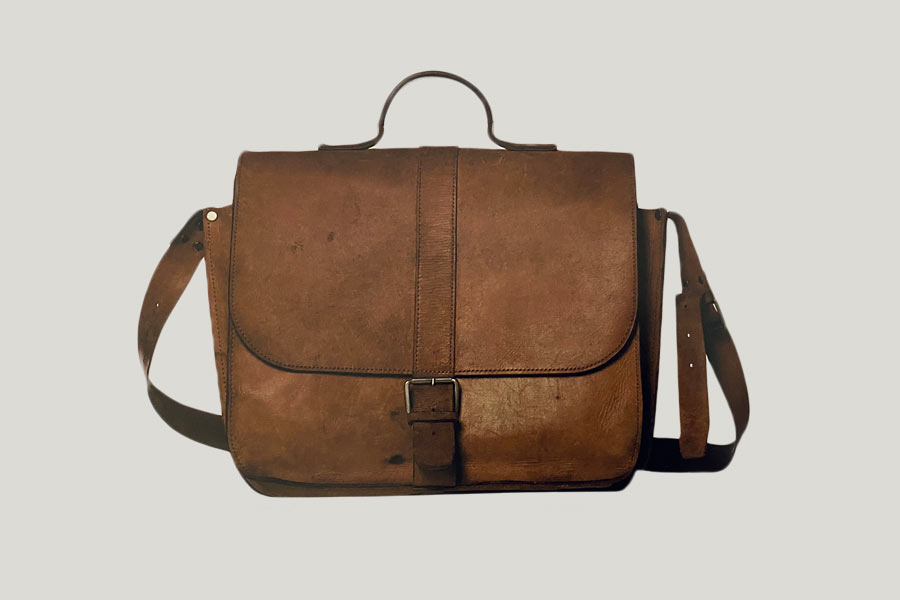 An example of archetypical design, a leather satchel bought by Owen in Istanbul in 1998. One among many objects that Owen collects for both inspiration and study.
How does knowing that an object will have to be sold/marketed affect its design in terms of aesthetics?
An example of archetypical design, a leather satchel bought by Owen in Istanbul in 1998. One among many objects that Owen collects for both inspiration and study.
How does knowing that an object will have to be sold/marketed affect its design in terms of aesthetics?
When I am working on design ideas, I am always thinking about how they will communicate their value. For me, usefulness is intrinsic to the expression of an idea. If the formal language of an item is not understandable through its semiotic identity, packaging or documentation linked to the item can be contrived to communicate this value. I always provide my thinking on this as part of the strategy relating to my products as they are introduced to the market.
What do you think are the aspects to consider in order to understand if an object is the product of good design?
If an object is truly useful, it has been authentically and thoughtfully conceived, expressed and delivered into the correct context for its utility to be accepted. So much of design is appropriateness. With good design, the consideration of environment and culture has the potential to move humanity forward as opposed to moving us backwards.
Does beauty have a role in design? I mean, do you think that the aesthetics of objects of use should be functional (to their use) or not?
In my view, beauty emerges from utility.
Do you think that minimalism improves functionality? If so, how?
Aesthetic minimalism has little appeal to me. If the result of pairing away unnecessary elements in refining a design appears minimalistic, then it is always an improvement.
Do you think that minimalism is a form of expressive language or a search for absence of expression?
Intentional minimalism (as opposed to aesthetic minimalism) can be appreciated the same way a spectacular wine can be. Good design is never simple in its conception but can be appreciated for what appears simple and speaks for itself with its results.
Do you think that a designer should try to be identified through the aesthetics of the objects he designed?
I do not claim an aesthetic because that implies a stylistic approach. I do have a method which favors restraint and a focus on utility.
Since the advent of Modernism, many designers have expressed criticism towards employing a stylistic approach to design, stating that style has nothing to do with design and that design is not styling. To me that is clear, but few have elaborated on that statement. And despite such a thesis, the work of many among those designers was strongly characterised by a personal style.
Also, from many interviews that I have made, it seems quite clear that for a designer it is almost impossible not to have a personal style because, to some extent, design is always informed by the designer’s personal cultural background and aesthetic sensibility. I would like to know, in your opinion, what does it mean to have a stylistic approach? And why do you think that such an approach is antithetical to design?
Indeed all designers bring the sum-total of their experiences to their work so it is impossible to operate without a unique point of view. However, favoring a stylistic approach to design suggests that aesthetic sensibilities stem from a personal agenda for self-expression. I have nothing against self-expression but find it can reduce the clarity or efficacy of a design solution to a problem if it overwhelms the subject matter. Therefore I do not think that operating with a program based on ‘personal style’ is relevant to design.
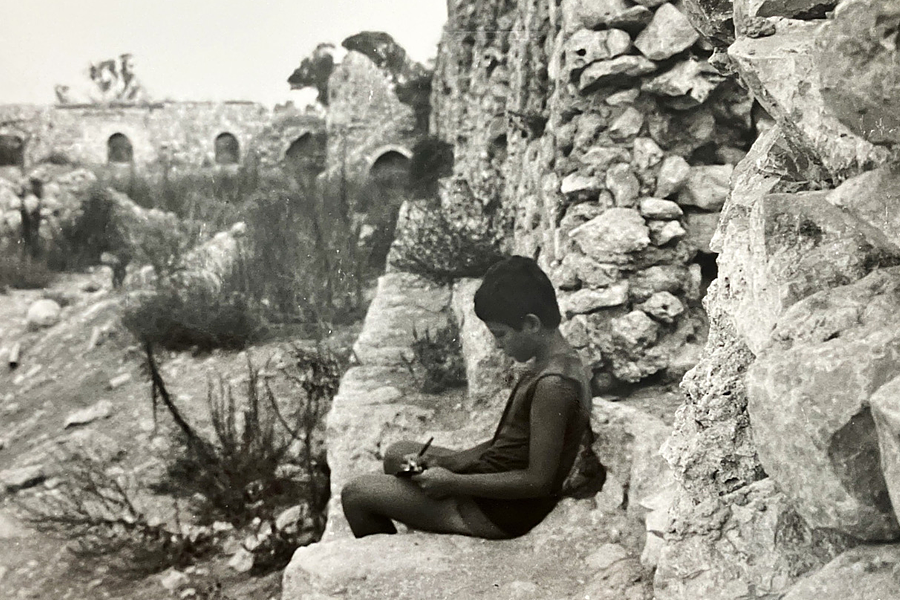 7-year-old Josh Owen drawing at an archaeological site.
How does your personal background—I mean both following your archeologist father to excavations as well as studying anthropology and sculpture—influence your approach to design?
7-year-old Josh Owen drawing at an archaeological site.
How does your personal background—I mean both following your archeologist father to excavations as well as studying anthropology and sculpture—influence your approach to design?
Participating on archaeological excavations in remote areas, in desert climates with spartan living conditions provided a focused backdrop for the work at hand. I learned to respect the climate, work collaboratively with others, and that persistence, coupled with careful scrutiny can reveal significant results. Decoding the ancient world through the artifacts left behind gave me insights about human behavior and material culture. Working as a sculptor taught me formal lessons about materials and expressing ideas. Taken together, these lessons have colored my approach to design.
Despite the fact that your studio is based within your house, I have noticed that the two spaces are clearly separated in terms of aesthetics. Do you think that the aesthetics of the workspace influences your design? And possibly, that to design in a specific way is necessary/useful to work in a specific workspace?
You are correct in that there are differences between spaces where I live and work. Mainly, the high-performance spaces such as kitchen, studio and washrooms are painted in bright whites and are environments which are saturated with natural light and full-spectrum lighting. These spaces allow for seeing clearly and provide a feeling of lightness and focus. The living, sleeping and other more communal areas are painted in warm whites and filled with natural wood and stone. These more calm and relaxed areas are lit with warm lighting and frame views of the woods outside in order to be more conducive to relaxation, comfort, conversation and collective activities.
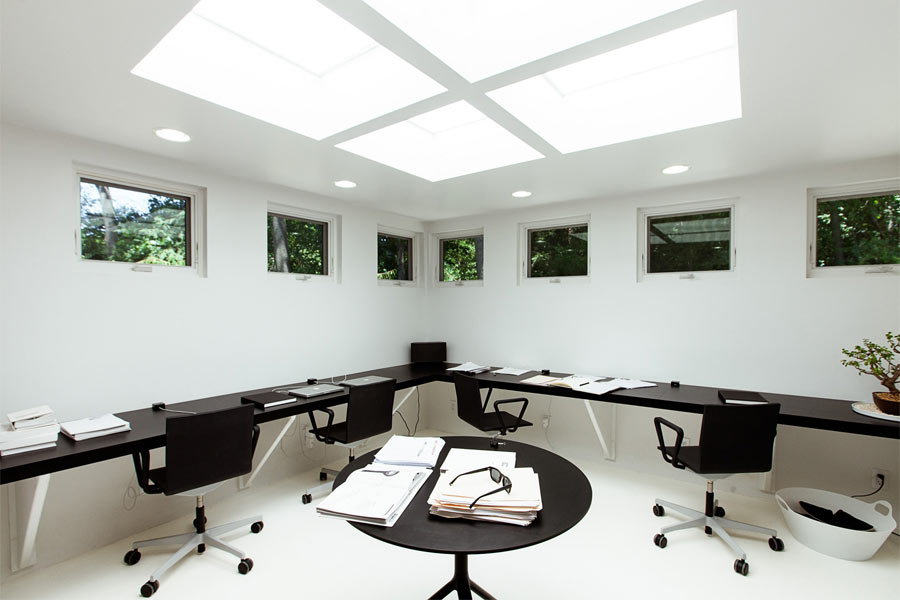 A view of Josh Owen’s studio in Rochester, New York.
Is there a particular object or type of objects that is/was specially important to you as a designer?
A view of Josh Owen’s studio in Rochester, New York.
Is there a particular object or type of objects that is/was specially important to you as a designer?
I am universally curious about objects and object classifications. I collect all manner of useful items both for inspiration and for study.
What is your (overall) definition of design?
My friend and colleague, the late Massimo Vignelli once told me that ‘it is not what you do that counts but how you do it that is relevant.’ There is something in this statement that transcends advice that is specific to design. It implies that design is bigger than what we (as a global culture) generally think of and encompasses our actions, our intentions and the web of relationships we build as well as the communities we participate in. Design for me is a total way of seeing and being.
What would you say is your ultimate goal as a designer?
This is a good question. For me success is three-fold: Social, Critical, and Commercial. For a designer to be effective, his or her impact should be socially relevant. In that capacity I work as an educator to help others move their ideas forward and empower them to make enduring decisions. Critical success means that the work that one does is judged by peers and professionals to operate at the highest levels. When my projects (or the projects of my students) win juried awards or are included in exhibitions, publications or museum collections, this is Critical success. Commercial success means that the one’s contribution has been accepted as useful in the world and contributes to the economic ecosystem. My ultimate goal is to help people by design.
Who are the people who most influenced your understanding of design? And what did you learn from them?
I’ve had many mentors over the years and I continue to learn from family, friends, colleagues, students and others. During my undergraduate studies at Cornell University, my sculpture professor Roberto Bertoia had an important impact on my career. As the cousin of the sculptor/designer Harry Bertoia, Roberto imparted a keen knowledge and passion for the intersection of art and design. He exposed me to other individuals that covered this territory like Isamu Noguchi and this awareness taught me how to grapple with the differences between art and design.
What have you learned by teaching design to other people?
There is a great deal of reciprocity between my role as an educator and my identity as a designer. I am constantly challenged by attempting to distill the lessons of industry into the classroom. Conversely I bring the idealistic views developed in academia to my clients which push them beyond bottom-line thinking. I’ve written a book about this entitled “Lenses for Design.” What I have learned from these activities is that people can do better if they are exposed to transformational thinking.
What would you recommend to a young designer?
I’ll echo what Achille Castiglioni always said: “If you are not curious, forget it.” I always tell young designers to be “professionally curious”. In other words, make it your business to push into new territory. The world needs it more than ever these days.
What do you think is unique about the Vignelli’s design?
The Vignellis were ‘complete’ designers. With their “Design is One” philosophy they left us with a universal message that design is a lens through which we can envision a more inclusive tomorrow.
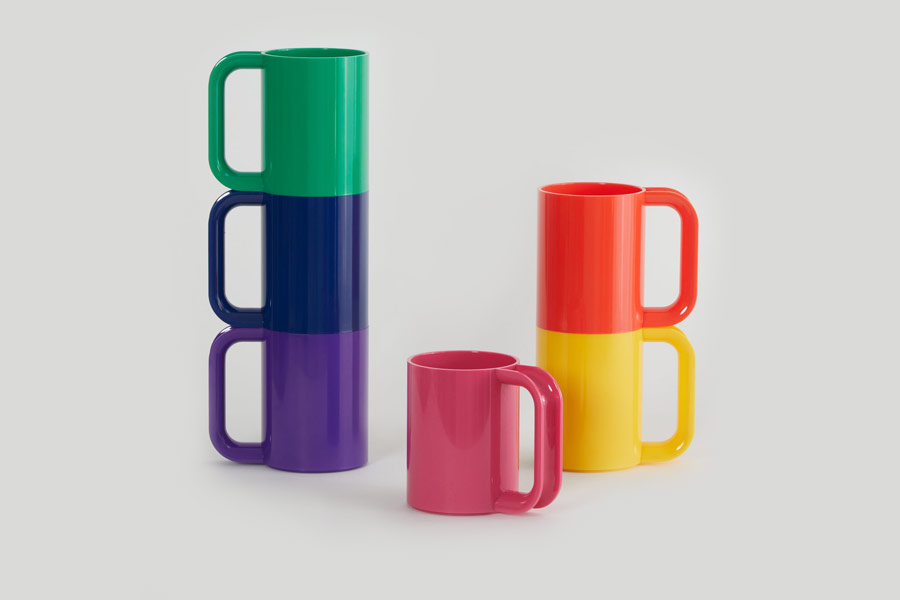 Max mugs, originally designed in 1964 by Lella and Massimo Vignelli. Produced by Heller.
What is the project by Vignelli that you prefer and why?
Max mugs, originally designed in 1964 by Lella and Massimo Vignelli. Produced by Heller.
What is the project by Vignelli that you prefer and why?
I have always been enamored with the Heller mug. This was a fixture in my childhood home and therefore regularly found in my hands growing up. My parents were not particularly knowledgeable about designed objects but my mother knew this item was useful, colorful, resilient and democratically priced so she purchased these for our home. The accessibility and pragmatic clarity of usefulness in this object has always captured my heart.
What job would you have done if you had not become a designer?
At one crossroads in my life I might have become a musician. Music is like design—done right, it can move hearts, minds and bodies.
Which was your favorite game when you were a child?
As a child I was never particularly captivated by games. I think this was because the rules seemed constrictive. I always loved drawing, playing with Legos, building things and making music because these activities dealt with exploring uncharted territory.
Thank you very much.
Prego.
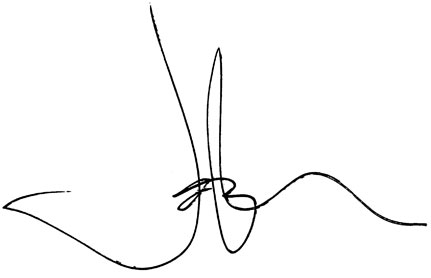 © 2024 Nicola-Matteo Munari. All rights reserved.
© 2024 Nicola-Matteo Munari. All rights reserved.
TO THE TOP ↑
Portfolio
XOX
Side Table (Bozart)
2003
A ready to assemble table that doesn’t require any tools or hardware. Its geometric form and simple construction relies on the multi-faceted functionality of MDF, while the exposed edges enhance both the table’s functional and aesthetic qualities.
Magnito
Salt and Pepper Shakers (Kikkerland)
2004
A beautiful simple object, made up of two halves that clicks together and pulls apart to reveal separate salt and pepper shakers.
Cube
Jigger (Kikkerland)
2007
The design of the Cube jigger evolved from an experiment to compress the six most common liquid measurements used to mix alcoholic drinks into the smallest possible dispenser. The project was awarded the International Design Award.
SOS
Multifunctional Stool (Casamania / Heller)
2008 / 2024
SOS stool blurs typological boundaries that define the acts of sitting, holding, and carrying by offering a hybrid, multi-functional approach to the use of the stool, that serves both as a sitting base as well as a side table, also featuring two curved elements offering mixed uses such as carrying handles, glass holders or bag hooks. Originally released by Casamania in 2008. Re-released by Heller in 2024.
Menorah
Menorah Candelabrum (Areaware)
2010
Made of solid cast iron, the Menorah designed for Areaware is traditional in construction and modern in conception, being often referred to as “the Helvetica of Menorahs”. The incorporated base plate catches the drippings from candles and provide a safe resting place for matches.
Metaproject
Book Series (RIT)
2011-ongoing
The chronicles of RIT’s industrial design annual initiative. Each book tells the story of the relationship between the particular year’s selected industry partner and the students, working under Owen’s tutelage. Among companies and institutions who partnered with RIT’s Metaproject program there were Corning Museum of Glass, Areaware, Herman Miller, Kikkerland, Staach and others.
Chiaroscuro
Wall Clocks (Loll)
2013
Chiaroscuro, an Italian term used in the context of visual arts to describe the use of contrasts of light to achieve a sense of volume, is a series of wall clocks with numbers engraved into the plastic surface. Depending on the way ambient light falls on the clock, the numbers became more or less prominent, underlining the metaphysical nature of time.
Perpetual Calendar
Calendar, 2013
The Perpetual Calendar stimulates physical interaction by allowing users to insert written notes in the holes demarcating the days, thus becoming a live and timeless object.
Lenses for Design
Book (RIT Press)
2016
A book dedicated to the design process of Owen himself, illustrating his philosophy and approach to problem solving, combining clarity of purpose and functional efficacy with emotive and tactile qualities.
Spoon Set
Tableware (Kikkerland)
2016
Wooden spoons set featuring a simple and timeless shape. The handles, half in natural wood and half painted in red, create an interesting identity, combining the traditional aesthetics of kitchen utensils with that of industrial work tools.
Torq
Nutcracker (OTHR)
2016
Inspired by industrial components, Torq is a nutcracker exploring the mechanical potential of 3D printing pushing this technology to its limits by reducing material thicknesses to a bare minimum, thus achieving a surprising lightness while remaining remarkably strong.
Mother Tongue
Guitar Pedal (Adventure Audio)
2020
A guitar pedal featuring a straightforward, intuitive design and modernist typography.
Vignelli Medal
Award (RIT)
2020
The Massimo and Lella Vignelli Distinguished Professor Medal was commissioned by The Rochester Institute of Technology’s College of Art and Design to be bestowed upon R. Roger Remington, RIT’s first Vignelli Distinguished Professor of Design on the occasion of his retirement. Owen himself was the second recipient of the Vignelli Medal.
Duets
Nesting Bowls (Nambé)
2022
A simply beautiful, aesthetically perfect and functionally useful set of stacking bowls. Each bowl features a pour spout, allowing for both measuring and prepping with the same bowl.
Vignelli Token
Souvenir
2024
The Vignelli Token is a design souvenir purposely conceived for the exhibition NYC×DESIGN×SOUVENIR to celebrate the legacy of Lella and Massimo Vignelli. Typography by Jason Alger.
Links & Docs
Josh Owen, Official Website
RIT, Profile
Metaproject, Official Page
SVA New York, Guest Lecture
YouTube, ADLS
YouTube, CoAD Lecture Series
YouTube, Design is Like a Virus
YouTube, GlassLab Design Session
YouTube, Interview
YouTube, Lecture for Columbus College of Art & Design
YouTube, Meet Josh Owen
Wikipedia, Profile
TO THE TOP ↑
Partnerships

Archivio Grafica Italiana is the first digital resource to the Italian graphic design heritage. Founded by Nicola M. Munari in 2015.

Design consultancy based in Piacenza, Italy. Founded by Nicola M. Munari in 2015, it operates in the whole field of design.
TO THE TOP ↑
© 2024 Nicola-Matteo Munari. All rights reserved.

 Josh Owen in Rome in 1992, reading Vignelli-designed Fodors Guide, as a student on scholarship.
Josh Owen in Rome in 1992, reading Vignelli-designed Fodors Guide, as a student on scholarship. An example of archetypical design, a leather satchel bought by Owen in Istanbul in 1998. One among many objects that Owen collects for both inspiration and study.
An example of archetypical design, a leather satchel bought by Owen in Istanbul in 1998. One among many objects that Owen collects for both inspiration and study.
 7-year-old Josh Owen drawing at an archaeological site.
7-year-old Josh Owen drawing at an archaeological site. A view of Josh Owen’s studio in Rochester, New York.
A view of Josh Owen’s studio in Rochester, New York.
 Max mugs, originally designed in 1964 by Lella and Massimo Vignelli. Produced by Heller.
Max mugs, originally designed in 1964 by Lella and Massimo Vignelli. Produced by Heller.

